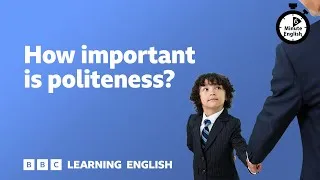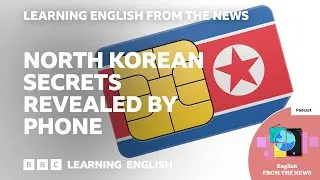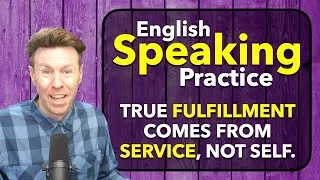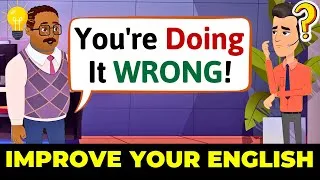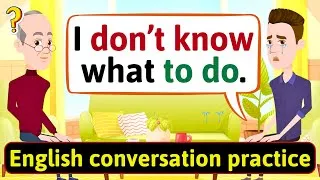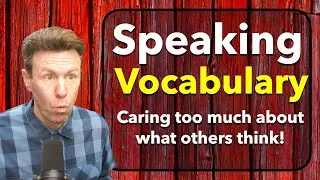Lesson #2/12 - TO BE: LINKING & HELP VERB | A2-B1 English Course
1,204 views ・ 2025-05-23
아래 영문자막을 더블클릭하시면 영상이 재생됩니다. 번역된 자막은 기계 번역됩니다.
00:04
Hello and welcome everyone to today's
presentation, which is about the little verb
0
4850
6430
안녕하세요. 오늘의 프레젠테이션에 오신 여러분을 환영합니다. 이번
프레젠테이션은 작은 동사
00:11
'to be'. Let me share my screen and see what I've
got to tell you about this verb. Okay so, first
1
11280
8160
'to be'에 대한 것입니다. 제 화면을 공유해서
이 동사에 대해 제가 말씀드릴 내용이 무엇인지 알려드리겠습니다. 그럼,
00:19
of all before we look at 'to be' itself, we need to
review the difference between action and state
2
19440
6720
우선 'to be' 자체를 살펴보기 전에
동작 동사와 상태 동사의 차이점을 살펴봐야 하고
00:26
verbs, and then also define what are linking verbs,
because verb 'be' is the most common linking verb in
3
26160
8320
, 연결 동사가 무엇인지도 정의해야 합니다.
왜냐하면 영어에서 가장 흔한 연결 동사는 'be' 동사이기 때문입니다
00:34
English. So, let's have a look at the difference
between action and state verbs. So, action or
4
34480
10080
. 그러면
동작 동사와 상태 동사의 차이점을 살펴보겠습니다. 따라서 동작 동사나
00:44
dynamic verbs describe an action, like: do, sleep,
discuss, whereas state or state verbs describe an
5
44560
10160
동적 동사는 '하다', '잠들다', '논하다'와 같이 동작을 설명하는
반면, 상태 동사나 상태 동사는
00:54
emotional, physical, or mental state. So for example:
I am doing a course; that's an action, whereas: I
6
54720
9360
감정적, 신체적 또는 정신적 상태를 설명합니다. 예를 들어:
저는 과정을 수강하고 있습니다. 그것은 행동입니다. 반면에: 저는
01:04
like the course; it's an emotional state. He is
sleeping is an action, whereas: He has a headache
7
64080
8320
그 과정을 좋아합니다. 그것은 감정 상태입니다. 그가
잠을 자고 있다는 것은 행동이고, 그가 두통을 앓고 있다는 것은
01:12
is a physical state. We discussed the issue; that's
an action, completed action in the past, whereas
8
72400
7600
신체적 상태입니다. 우리는 그 문제를 논의했습니다. 그건
행동이에요, 과거에 완료된 행동인데, 반면에
01:20
We agreed on a solution; it's a mental state. So,
that's a very important difference to be aware of
9
80000
8800
우리는 해결책에 동의했어요. 그건 정신 상태예요. 따라서
01:28
between action and state verbs. Now one little
important note here for you is that we must
10
88800
10240
동작 동사와 상태 동사 사이에는 꼭 알아두어야 할 중요한 차이점이 있습니다.
여기서 여러분에게 중요한 작은 참고사항은
01:39
avoid using a Continuous tense with a state verb.
So, with an action verb like sleep, we can say: He
11
99040
7760
상태 동사와 함께 진행형을 사용하는 것을 피해야 한다는 것입니다.
따라서 sleep과 같은 동사를 사용하면 다음과 같이 말할 수 있습니다. He
01:46
is sleeping; Present Continuous, but we cannot use
this tense, for example Present Continuous, with a
12
106800
8240
sleep; 현재 진행형이지만,
예를 들어 현재 진행형은
01:55
state verb like 'have'. So, we can't say: He is having
a headache; it has to be the simple tense: He has a
13
115040
8000
'have'와 같은 상태 동사와 함께 사용할 수 없습니다. 그러므로 우리는 그가 두통을 앓고 있다고 말할 수 없습니다.
시제는 간단해야 합니다: 그는
02:03
headache. That's just a little note, but we can now
go back to state verbs which have subcategories,
14
123040
9040
두통이 있습니다. 그건 짧은 메모일 뿐이지만, 이제
하위 범주를 갖는 상태 동사로 돌아갈 수 있습니다.
02:12
and one of them is linking verbs. So, what is a
linking verb? A linking verb describes or gives
15
132080
7120
그 중 하나가 연결 동사입니다. 그렇다면
연결 동사란 무엇일까요? 연결 동사는
02:19
more information about the subject of the sentence.
It hasn't got anything to do with an object but
16
139200
7520
문장의 주어에 대한 더 많은 정보를 설명하거나 제공합니다.
그것은 사물과는 아무런 관련이 없지만
02:26
mainly information about the subject. For example:
The course is - the verb be - interesting. Steve feels
17
146720
10480
주로 주제에 대한 정보입니다. 예를 들어:
그 과정은 - 동사 be - 흥미롭습니다. 스티브는
02:37
ill. The solution sounds right. There is
more information in the words 'interesting,
18
157200
7680
몸이 아프다. 해결책이 옳은 것 같습니다.
'흥미로운,
02:44
ill, and right' about the subjects: the course,
Steve, and the solution. That's the definition
19
164880
7600
나쁜, 옳은'이라는 단어에는 해당 과목, 즉 강의,
스티브, 해결책에 대한 더 많은 정보가 들어 있습니다. 이것이
02:52
of a linking verb. So, what is the most common
linking verb in English? It's the verb 'be'. Now why is
20
172480
11760
연결 동사의 정의입니다. 그렇다면
영어에서 가장 흔한 연결 동사는 무엇일까요? 그것은 동사 'be'입니다. 그러면 왜
03:04
'be' the most common linking verb? It's because it can
give many different types of information about the
21
184240
6480
'be'가 가장 흔한 연결 동사일까요? 이는
해당 주제에 관해 다양한 유형의 정보를 제공할 수 있기 때문입니다
03:10
subject. It can tell us about the subject's
profession, for example: Steve is a manager.
22
190720
7360
.
예를 들어, 스티브는 관리자입니다. 이는 주제의 직업에 대해 알려줄 수 있습니다. 이를 통해
03:18
It can tell us about the subject's age: I am 28
years old. (If you believe that, you believe anything -:)
23
198080
8400
주제의 나이를 알 수 있습니다. 저는 28
세입니다. (그걸 믿는다면 뭐든지 믿는 셈이죠 -:)
03:26
It can tell us about someone's nationality: They
are Australian. Someone's emotional state: Jane
24
206480
8080
이는 누군가의 국적을 알려줄 수도 있습니다. 그들은
호주인입니다. 누군가의 감정 상태: 제인은
03:34
was excited. Someone's, or something's in this case,
general attribute: The cakes were delicious. It can
25
214560
8880
흥분했습니다. 이 경우 누군가 또는 무언가의
일반적인 속성: 케이크가 맛있습니다.
03:43
even tell us about someone's location: We were in
the garden. That's why the verb 'to be' is so common
26
223440
7200
심지어 누군가의 위치까지 알려줄 수 있습니다. 예를 들어, 우리는 정원에 있었습니다
. 그래서 영어에서 'to be'라는 동사가 매우 흔하고
03:50
and so used in English. Because if we look at
other linking verbs, they can replace 'be' but only
27
230640
8480
많이 쓰이는 것입니다.
다른 연결 동사를 살펴보면 'be'를 대체할 수 있지만
03:59
when 'be' is followed by an adjective describing a
state or an attribute, so a very narrow use of the
28
239120
6560
'be' 뒤에 상태나 속성을 설명하는 형용사가 올 때만 가능하므로
04:05
verb 'be'. For example: Steve seems efficient. Jane
feels excited. These are the other linking verbs:
29
245680
8560
동사 'be'의 사용은 매우 제한적입니다. 예를 들어: 스티브는 효율적인 것 같아요. 제인은
흥분을 느낀다. 다른 연결 동사는 다음과 같습니다:
04:14
seems, feels. Sound: You sound tired. Smell: The
soup smells good. The vegetables looked fresh. The
30
254240
10080
seems, feels. 소리: 피곤해 보이네요. 냄새:
수프 냄새가 좋다. 야채가 신선해 보였습니다.
04:24
cakes tasted delicious. And there are two other
linking verbs that are important, which are 'get'
31
264320
6800
케이크는 정말 맛있었어요. 그리고
중요한 연결 동사 두 개가 더 있는데, 'get'
04:31
and 'become': I got angry. I became angry. But if
you look at the next word after these verbs,
32
271120
7280
과 'become'입니다. 나는 화가 났습니다. 나는 화가 났다. 하지만
이 동사 뒤에 오는 단어를 보면,
04:38
it's always just an adjective, a description. These
verbs cannot also give information about age or
33
278400
7200
그것은 항상 단지 형용사, 즉 설명일 뿐입니다. 이러한
동사는 나이, 직업 또는 위치 등에 대한 정보를 제공할 수 없습니다.
04:45
profession or location, etc. Right so, one little
exception - as there always is in English - is that
34
285600
10480
그렇습니다. 하나의 작은
예외는 - 영어에서 항상 그렇듯이 -
04:56
the linking verb 'become' can also be followed by
a noun, usually someone's profession. For example:
35
296080
6720
연결 동사 'become' 뒤에
명사, 보통은 누군가의 직업이 올 수 있다는 것입니다. 예를 들어:
05:02
He became a politician. So, that's all for the
verb 'be' 'as a linking verb. But the verb 'to
36
302800
10240
그는 정치인이 되었습니다. 그럼,
연결 동사로서의 'be' 동사에 대한 설명은 여기까지입니다. 하지만 동사 'to
05:13
be' is also a help verb. When we want to
create a Continuous tense or the Passive Voice,
37
313040
8480
be'는 또한 도움을 주는 동사입니다.
진행형이나 수동태를 만들고 싶을 때도
05:21
we also need to use the verb 'be'. We already had
examples of the Continuous tense: I am doing a
38
321520
8000
동사 'be'를 사용해야 합니다. 우리는 이미
진행형의 예를 보았습니다. 저는 강의를 듣고 있는데
05:29
course, where you can see the verb 'be'. And: He is
sleeping. 'is' again is one of the conjugations
39
329520
8160
, 그 강의에서 동사 'be'를 볼 수 있습니다. 그리고: 그는
자고 있어요. 'is'도
05:37
of 'be'. Also in the Passive Voice, for example: The
vegetables are steamed. And: A solution was found.
40
337680
9360
'be'의 활용형 중 하나입니다. 또한 수동태에서는 예를 들어 다음과 같습니다.
야채를 쪄요. 그리고: 해결책이 발견되었습니다.
05:47
Now, we're not going to go into any detail on
Continuous tenses or the Passive Voice,
41
347040
5360
이제 우리는
지속형이나 수동태에 대해 자세히 다루지 않을 것입니다.
05:52
but just so that you can see how often this verb
comes up in the English language. Therefore, it's
42
352400
9120
하지만 이 동사가
영어에서 얼마나 자주 등장하는지 알려드리려고 합니다. 그러므로
06:01
really important that we conjugate it correctly.
And as you have probably noticed, its conjugation
43
361520
8240
우리가 그것을 올바르게 활용하는 것이 정말 중요합니다.
그리고 아마 이미 알고 계시겠지만, 이 동사의 활용법은
06:09
is more complicated than any other verb in English.
For example, if we compare another important verb
44
369760
6480
영어의 다른 어떤 동사보다 더 복잡합니다.
예를 들어, 영어의 다른 중요한 동사
06:16
in English 'have' with 'be', you can see that 'have' - if
you look down the list - only has really three forms:
45
376240
8320
'have'를 'be'와 비교해 보면,
목록을 살펴보면 'have'는 실제로 과거형으로
06:24
have, has, and had in the Past, whereas the verb 'be'
has six different forms here: be, am, is, are, was, and
46
384560
10560
have, has, had의 세 가지 형태만 있는 반면, 동사 'be'는 과거형으로
be, am, is, are, was, were의 여섯 가지 형태를 가지고 있습니다
06:35
were in the Past. In the Future, things are easy. On
top of that, the verb 'be' has specific contractions,
47
395120
8160
. 미래에는 모든 것이 쉬워질 겁니다.
게다가 동사 'be'에는
06:43
like: I'm, he's, we're, etc. They'll be; again it's
Future. The contraction is on the 'will' not on
48
403280
8720
I'm, he's, we're 등과 같은 특정한 축약형이 있습니다. 그들은 다음과 같습니다. 다시
미래입니다. 축약형은 'be'가 아닌 'will'에 있습니다
06:52
the 'be'. So, without going into too much detail -
because you can use the slides later to review
49
412000
8080
. 그러니 너무 자세히 설명하지 않겠습니다.
나중에 슬라이드를 사용하여 활용을 검토할 수 있으니까요
07:00
the conjugations. I'm just trying to make you aware
of the complication of the conjugation of this
50
420080
6480
. 저는 단지
이
07:06
very important verb, and insist that you do need
to revise it and really have it active in order
51
426560
7600
매우 중요한 동사의 활용이 얼마나 복잡한지 알려드리고자 하는 것이고,
07:14
to sound more fluent and accurate. So again, even in
the negative, we have the full forms: I'm not, is not,
52
434160
7760
더 유창하고 정확하게 들리도록 하려면 동사 활용을 수정하고 실제로 활성화해야 한다는 것을 강조하고자 하는 것입니다. 따라서 다시 말해,
부정형에서도 완전한 형태인 I'm not, is not이 있지만,
07:21
but also specific contracted forms: isn't, aren't,
wasn't, weren't, and then won't be. Now, as you can
53
441920
9680
구체적인 축약형인 isn't, aren't,
wasn't, weren't, won't be도 있습니다. 이제, 여러분이 볼 수 있듯이
07:31
see, for example 'I'm not' doesn't have a contraction.
So, there are little points you have to be careful
54
451600
6080
, 예를 들어 'I'm not'에는 축약형이 없습니다.
그러니 조심해야 할 작은 점들이 있습니다
07:37
of. As well in the question form it takes direct
questions, so: Am I? Is he? etc. Or negative questions:
55
457680
11120
. 질문 형식에서도 직접적인
질문이 사용됩니다. 즉, '내가 그런가요?'와 같습니다. 그렇죠? 등등. 또는 부정적인 질문:
07:48
Am I not? Isn't he? Again, a little point here to
notice that as 'am not' doesn't have a contracted form,
56
468800
10080
내가 아닌가? 그렇지 않은가? 다시 한번, 여기서 작은 요점을 하나
알아두세요. 'am not'에는 축약형이 없기 때문에
07:58
you may also hear the negative question: Aren't
I? which is very strange. Suddenly the verb for
57
478880
7920
부정 의문문인 'Aren't I?'도 들릴 수 있습니다.
매우 이상한 일이죠. 갑자기
08:06
'I' has become 'are'; so, 'Aren't I?' is a strange thing
to hear, but it exists. So, that's all for the verb
58
486800
10640
'나'의 동사가 'are'로 바뀌었습니다. 그럼, '내가 그렇지 않은가?' 이상하게
들릴지 모르지만, 실제로 존재합니다. 그럼, 동사
08:17
'to be' and the things you need to know and work
on. But I thought I'd finish with two little fun
59
497440
6400
'to be'에 대한 설명과 여러분이 알아야 할 것, 노력해야 할 것에 대한 설명은 여기까지입니다
. 하지만
08:23
facts also about the verb 'be'. The first one is
about non-standard English. In some non-standard
60
503840
8240
동사 'be'에 대한 두 가지 재밌는 사실로 마무리하고 싶습니다. 첫 번째는
비표준 영어에 관한 것입니다. 일부 비표준
08:32
varieties of English, you may hear the word 'ain't'.
You have probably heard it in these varieties. This
61
512080
8080
영어 변종에서는 'ain't'라는 단어를 들을 수 있습니다.
여러분은 아마 이런 종류에서 이 말을 들어보았을 것입니다. 이
08:40
word 'ain't' replaces: I'm not, isn't, aren't, and even
haven't, and hasn't. So, you may hear something like:
62
520160
7760
단어 'ain't'는 다음을 대체합니다: I'm not, isn't, aren't, 심지어 have not
, has not't. 그래서, 여러분은 다음과 같은 말을 들을 수 있습니다:
08:47
This ain't right. It's very informal, very colloquial,
and only appropriate in some varieties of English.
63
527920
9360
이건 옳지 않아요. 매우 비공식적이고 구어체적
이며 일부 영어 변종에서만 적합합니다.
08:57
Therefore, you will definitely hear this word in
movies and songs, but like any other non-standard
64
537280
6000
따라서 여러분은 영화나 노래에서 이 단어를 꼭 들을 수 있을 것입니다.
하지만 다른 비표준
09:03
word or phrase, please don't use it yourself. Avoid
using it, especially in formal settings; it will be
65
543280
7760
단어나 문구와 마찬가지로, 이 단어도 직접 사용하지 마십시오.
특히 공식적인 자리에서는 사용하지 마십시오.
09:11
completely inappropriate for you to use this
word. And the final fun fact I'd like to share
66
551040
7920
당신이 이 단어를 사용하는 것은 전혀 부적절합니다
. 그리고 제가 여기서 공유하고 싶은 마지막 재미있는 사실은
09:18
here is about old English. As you have noticed, as
you know, in modern English, 'you' is both a singular
67
558960
10160
고대 영어에 관한 것입니다. 여러분이
알고 있듯이 현대 영어에서 'you'는
09:29
pronoun referring to one person and a plural
pronoun referring to two or more people, and
68
569120
6400
한 사람을 가리키는 단수 대명사이자
두 명 이상을 가리키는 복수 대명사입니다. 그리고
09:35
as you have seen, in both cases, we use the plural
verbs 'are' and 'were'. So we can be addressing only
69
575520
6800
두 경우 모두 복수
동사 'are'와 'were'를 사용합니다. 그래서 우리는
09:42
one person, like Jackie, and we say: Jackie, are
or were you ready? Or we can be addressing two,
70
582320
7520
재키와 같은 한 사람에게만 말을 걸 수 있고, "재키,
준비가 되었나요?"라고 물을 수 있습니다. 아니면 우리는 두 명,
09:49
three, ten people. In this case: Jackie and Sarah,
are - again same thing: are you ready or were you
71
589840
7440
세 명, 열 명에게 말을 걸 수도 있습니다. 이 경우: 재키와 사라는
- 다시 한번 같은 질문입니다: 준비됐나요? 아니면
09:57
ready? So, we don't differentiate between singular
'you' and 'plural' you in modern English. But in old
72
597280
7760
준비됐나요? 그래서
현대 영어에서는 단수형 'you'와 복수형 'you'를 구별하지 않습니다. 하지만 고대
10:05
English, 'you' did have a singular version, which was
'thou' and it would conjugate in the Present 'thou
73
605040
9040
영어에서는 'you'는 단수형인
'thou'가 있었고 현재는 'thou
10:14
art' and in the past: thou wert'. So, if you listen to
a Shakespeare play, watch a Shakespeare play,
74
614080
8960
art'로, 과거에는 'thou wert'로 사용되었습니다. 그러니까
셰익스피어의 연극을 듣거나, 셰익스피어의 연극을 보면
10:23
you will hear these words. So, you will only see
them in classical literature. And of course, you're
75
623040
7120
이런 말을 들을 수 있을 겁니다. 그러니까,
이런 것들은 고전 문학에서만 볼 수 있을 거예요. 물론, 셰익스피어처럼 들리고 싶지
10:30
not going to need them at all yourself, unless you
want to sound like Shakespeare. So that's all for
76
630160
6640
않다면, 당신 자신에게는 전혀 필요하지 않을 것입니다
. 이제
10:36
the verb 'to be'. I hope it's been helpful. Again I
stress the fact that you need to really know how
77
636800
6480
동사 'to be'에 대한 설명은 끝났습니다. 도움이 되었으면 좋겠습니다. 다시 한번
강조하고 싶은 것은, 사람들이 혼란스러워하지 않도록
10:43
to conjugate the verb 'to be' in different tenses
so that you don't confuse people. I hope you've
78
643280
7600
'to be' 동사를 다른 시제로 활용하는 방법을 알아야 한다는 것입니다
.
10:50
enjoyed this lesson. for more on this topic, click
here. Remember to also check out my complete online
79
650880
7120
이 수업이 즐거웠기를 바랍니다. 이 주제에 대한 자세한 내용을 보려면
여기를 클릭하세요. 또한 제가 진행하는 온라인 강좌 전체를 확인해보시고
10:58
course, and don't forget to like and subscribe.
Thank you for watching and happy studies.
80
658000
6560
, 좋아요를 누르고 구독하는 것도 잊지 마세요.
시청해 주셔서 감사합니다. 즐거운 공부 되시길 바랍니다.
New videos
Original video on YouTube.com
이 웹사이트 정보
이 사이트는 영어 학습에 유용한 YouTube 동영상을 소개합니다. 전 세계 최고의 선생님들이 가르치는 영어 수업을 보게 될 것입니다. 각 동영상 페이지에 표시되는 영어 자막을 더블 클릭하면 그곳에서 동영상이 재생됩니다. 비디오 재생에 맞춰 자막이 스크롤됩니다. 의견이나 요청이 있는 경우 이 문의 양식을 사용하여 문의하십시오.
